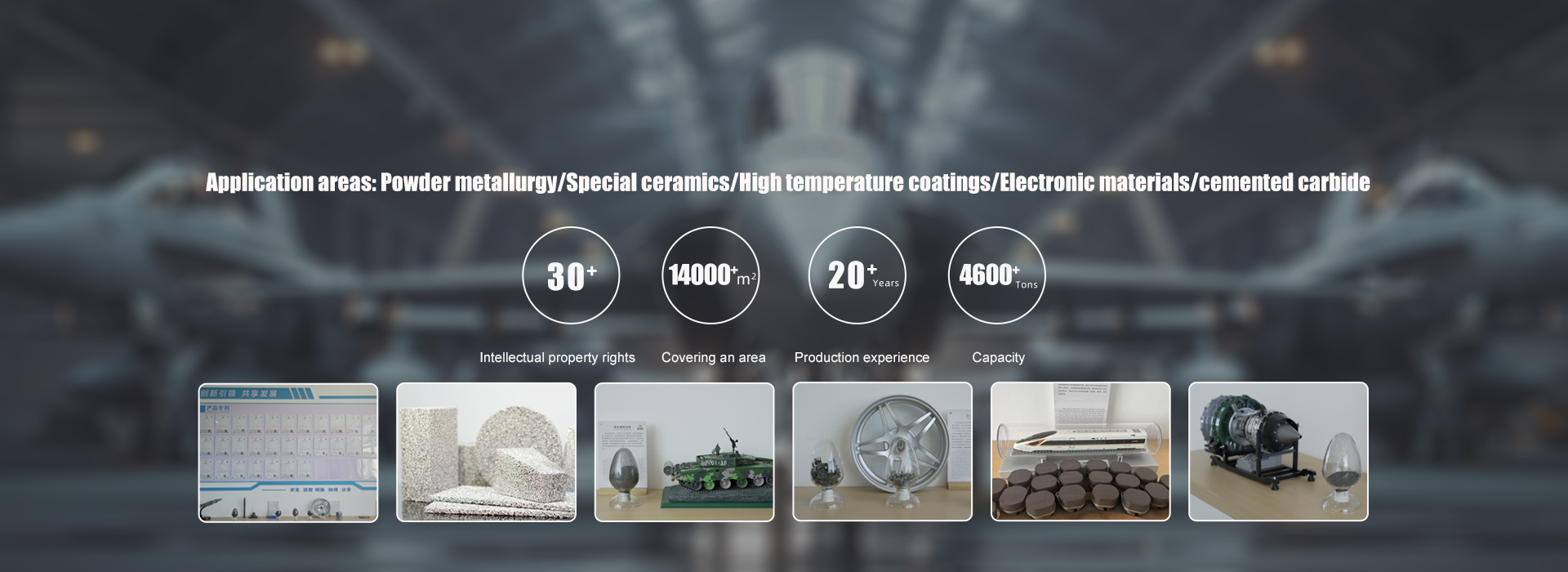At present, the catalysts widely developed and applied for automobile exhaust purification abroad are mainly composed of precious metals such as platinum (Pt) and rhodium (Rh). Currently, the commonly used platinum rhodium based ternary catalysts mainly purify HC through the oxidation of Pt, CO , Purification of NOx through the reduction effect of Rh. Although this catalyst has the advantages of high activity, good purification effect, and long service life, its cost is also relatively high, especially for Pt, Rh, etc., which are limited by resources. In order to alleviate the contradiction between the supply and demand of Pt, especially Rh, palladium (Pd), which is relatively inexpensive, has been widely used. Catalysts composed of Pt, Rh, and Pd, as well as palladium catalysts, have been developed.
People have found that catalysts made by replacing some precious metals with rare earths are low-cost and can achieve satisfactory purification effects.
The rare earths used in rare earth automobile exhaust purification catalysts are mainly a mixture of cerium oxide, praseodymium oxide, and lanthanum oxide, with cerium oxide being the key component. Due to the redox properties of cerium oxide, the composition of exhaust emissions can be effectively controlled, allowing for oxygen supply in a reducing atmosphere or oxygen consumption in an oxidizing atmosphere. Cerium dioxide also plays a stabilizing role in the noble metal atmosphere to maintain high catalytic activity of the catalyst. So the development of rare earth and precious metal automotive exhaust purifiers is to take the strengths of rare earths and supplement the weaknesses of precious metals, and produce practical automotive exhaust purifiers. Its characteristics are low price, good thermal stability, high activity, and long service life, so it is highly favored in the field of automobile exhaust purification.
The outer electronic structure of rare earth elements is similar, and the catalytic performance difference between rare earth elements is relatively small. The overall catalytic activity is not as good as that of transition elements and precious metal elements in the outer electronic structure. In current practical industrial catalysts, rare earths are generally only used as co catalysts or as an active component in catalysts, rarely as the main catalyst. As a promoter of precious metal catalysts, rare earth elements can improve and alter the performance of catalysts, and their role as promoters is far greater than that of traditional alkali metals or alkaline earth metal elements. China's motor vehicle emissions are severe, but precious metals are scarce and rare earth resources are abundant. Therefore, the application of rare earths in motor vehicle exhaust treatment has been widely used in China.
The lean catalyst mainly has oxygen storage and catalytic effects in motor vehicle exhaust purification catalysts. Adding it to the catalyst activity group can improve the catalyst's resistance to lead and sulfur poisoning, high temperature stability, and improve the air-fuel ratio working characteristics of the catalyst.
Application of Rare Earth Elements in TWC
The unique properties of rare earth oxides have long attracted widespread attention from catalyst researchers both domestically and internationally. However, so far, rare earth oxides have been mostly used as catalyst supports and additives. The role of rare earths in catalysts mainly includes the following aspects.
1. Active components of automobile exhaust purification catalysts
The main harmful components in automobile exhaust are carbon oxides (Hc), carbon monoxide (CO), and nitrogen oxides (NO), and the chemical reactions in purifiers include oxidation and reduction reactions. Therefore, it is necessary to find a three-way catalyst that can simultaneously carry out oxidation and reduction reactions, so that the catalyst can use the exhaust temperature and oxygen concentration in the air to simultaneously oxidize and reduce CO, HC, and NO in the exhaust gas in the car exhaust pipe, converting them into harmless substances CO2, H2O, and N2. The research results on the catalytic activity of Ce and La rare earths show that the introduction of CeO2 significantly improves the catalytic conversion activity of CO and NO. Therefore, rare earth oxides can be used to completely or partially replace precious metals as the active component of catalysts, catalyzing the reduction of Co, HC, and NO.
2. Improve the catalyst's ability to resist poisoning
The Pb, S, P and other substances contained in motor vehicle exhaust are prone to poisoning precious metal three-way catalysts. These substances undergo chemical adsorption on the surface active sites of the catalyst, hindering the progress of the reaction and causing the catalyst to lose its catalytic activity.
Rare earths have the ability to resist sulfide poisoning because these toxic substances form stable phases with them, such as Ce203 reacting with sulfides to form stable CO2 (S04) 3. In the reducing atmosphere, these sulfides are released again and converted into H2S on Pt and Rh catalysts, which is discharged together with the exhaust gas (producing odorous H2S). The conversion effect of rare earth on sulfides makes rare earth containing catalysts have strong resistance to poisoning.
Research has shown that Ce02 has a certain sulfur storage effect on the SO2 component in exhaust gas. When the car engine operates under lean combustion conditions, the following reaction occurs: 6 CeO2+3S02- Ce2 (S04) 3+2C0203. The sulfur stored under rich combustion conditions is released, thereby enhancing the catalyst's ability to resist S poisoning.
3. Improve the thermal stability and mechanical strength of catalysts
Usually, the YA-A1203 that constitutes the activated coating will transform into A-A1203 at temperatures above 800 ℃, resulting in an increase in density, a decrease in surface area, and the collapse of pore structure. And above 1200 ℃, the activated coating will detach from the carrier, increasing gas resistance and reducing catalytic activity.
Adding Ce02 can stabilize the crystal structure of YA-A1203, keeping the activated coating stable at high temperatures and suppressing activity loss. Cerium oxide can maintain a surface area of 60 m2 · g.1 after several hours of treatment at 1473 K in a reducing or neutral atmosphere, indicating that Ce3+mainly present in Ce A1203 hinders crystal growth and the transformation of alumina.
4. Automatically adjust the air-fuel ratio (increase oxygen storage capacity to enhance catalyst activity)
(Regarding the theoretical air-fuel ratio during the operation of a car engine, the composition of car exhaust gas undergoes periodic changes. By utilizing the selective characteristics, the substance that can reversibly adsorb and release oxygen in the exhaust gas is called an oxygen storage substance, and CeO has this effect.)
Many studies have found that rare earth oxides such as cerium oxide have the ability to store and release oxygen. Ce02 releases O2 in the oxygen poor region, oxidizes C0 and HC, and stores O2 in the oxygen rich region, thereby controlling the atmosphere fluctuations near precious metals, stabilizing the air-fuel ratio A/F near stoichiometric equilibrium, expanding the air-fuel ratio window, and maintaining the catalytic activity of the catalyst.
Ce in Ce02 can change the oxidation state (conversion between Ce4+and Ce3+), and has excellent oxygen storage and release capabilities. It can store/release oxygen under lean/rich combustion conditions, thereby improving the conversion rate of CO, HC, and NO by the catalyst.
When the engine instantly becomes rich in oil and causes instantaneous oxygen deficiency in the exhaust gas, tetravalent Cc (CeO2) can be converted into trivalent Ce (Ce2O3), releasing O2. When the engine instantly becomes lean in oil and causes instantaneous oxygen enrichment in the exhaust gas, Ce2O3 combines with O2 to convert into CeO2, which is known as oxygen storage.
The reaction equation is as follows: 2 CeO2-Ce2O3+1/2O2
5. The role of accelerators
The automobile exhaust contains about 10% water vapor. Ce02 can promote the water gas transfer reaction to produce reducing gases, which can improve the purification rate of CO in the absence of oxygen. At the same time, H2 can be used for the reduction of NO, improving the purification rate of NO in the rich combustion zone. CO+H2O- -CO2+H2
In order to compensate for the insufficient ability of Pd in catalytic reduction of NO in Pd rich and all Pd catalysts, La203 was added to Pd. This Pd La catalyst can fully compete with Pt. Rh catalyst in terms of performance.
6. Improve the catalytic activity of the active coating
Adding CeO2 keeps the precious metal particles in the active coating dispersed, avoiding the reduction of catalytic sites caused by sintering and damaging the activity. Adding CeO2 to Pt/γ 2Al2O3 alters the surface properties of γ 2Al2O3 and improves the dispersion of Pt, as CeO2 can be dispersed in a single layer on γ 2Al2O3 (with a maximum single layer dispersion of 01035 gCeO2Pg γ 2Al2O3). When the CeO2 content is equal to or close to the dispersion threshold, The dispersion of Pt reaches its highest level. The dispersion threshold of CeO2 is its optimal dosage. Rh loses its activation effect in an oxidizing atmosphere above 600 ℃ due to the formation of a solid solution between Rh2O3 and Al2O3 generated by high-temperature oxidation. The presence of CeO2 will weaken the reaction between Rh and Al2O3, while maintaining the activation effect of Rh. La2O3 can also prevent the growth of Pt ultrafine particles. After adding CeO2 and La2O3 to PdP γ 2Al2O3, it was found that, The addition of CeO2 promotes the dispersion of Pd on the carrier and produces a synergistic reduction effect. The high dispersion of Pd and its interaction with CeO2 on Pd/γ 2Al2O3 are key factors for the high activity of the catalyst.
CeO2 is also an effective catalyst for hydrocarbon oxidation. When investigating CO oxidation on Pt/CeO2, it was found that lattice oxygen at the interface between Pt and CeO2 plays an important role. Low valence cerium and oxygen defects can be generated on the surface of CeO2 in vacuum or reducing atmosphere, which has excellent catalytic performance and gas sensing function for redox, especially the function of exchanging charges and species with adsorbed molecules. CeO2 is prone to generate low valence cerium and oxygen vacancies under the action of hydrogen. Pt/CeO2 can absorb gas-phase hydrogen and release it again. Adsorb oxygen on partially reduced CeO2 at room temperature to form molecular ion oxygen species. Oxygen species can partially desorb and can be converted into lattice oxygen above 170 ℃ [4]. Additionally, The modification of γ 2Al2O3 support by CeO2 is beneficial for the desorption and oxidation recovery of surface oxygen species on palladium catalyst, thereby promoting the oxidation of Pd/CeO22 γ 2Al2O3 catalyst.
✕

banner

We aspire to become a well-known enterprise in the global production of functional ceramic powders, new energy storage materials






